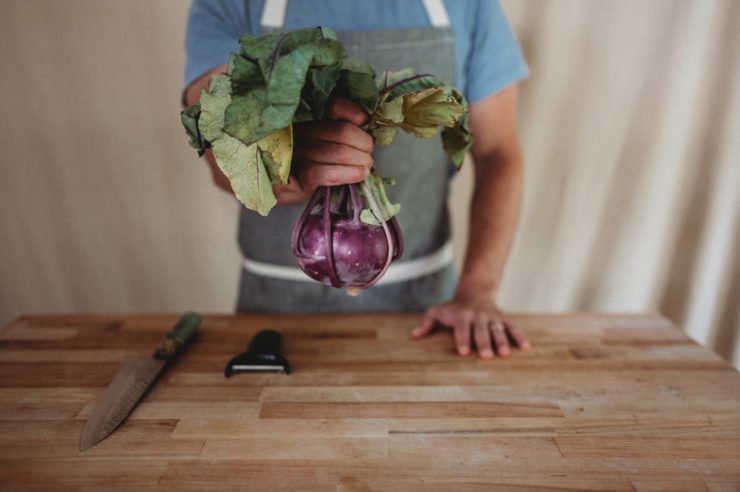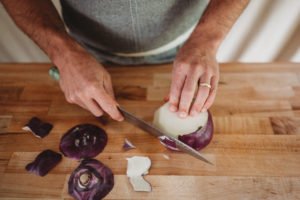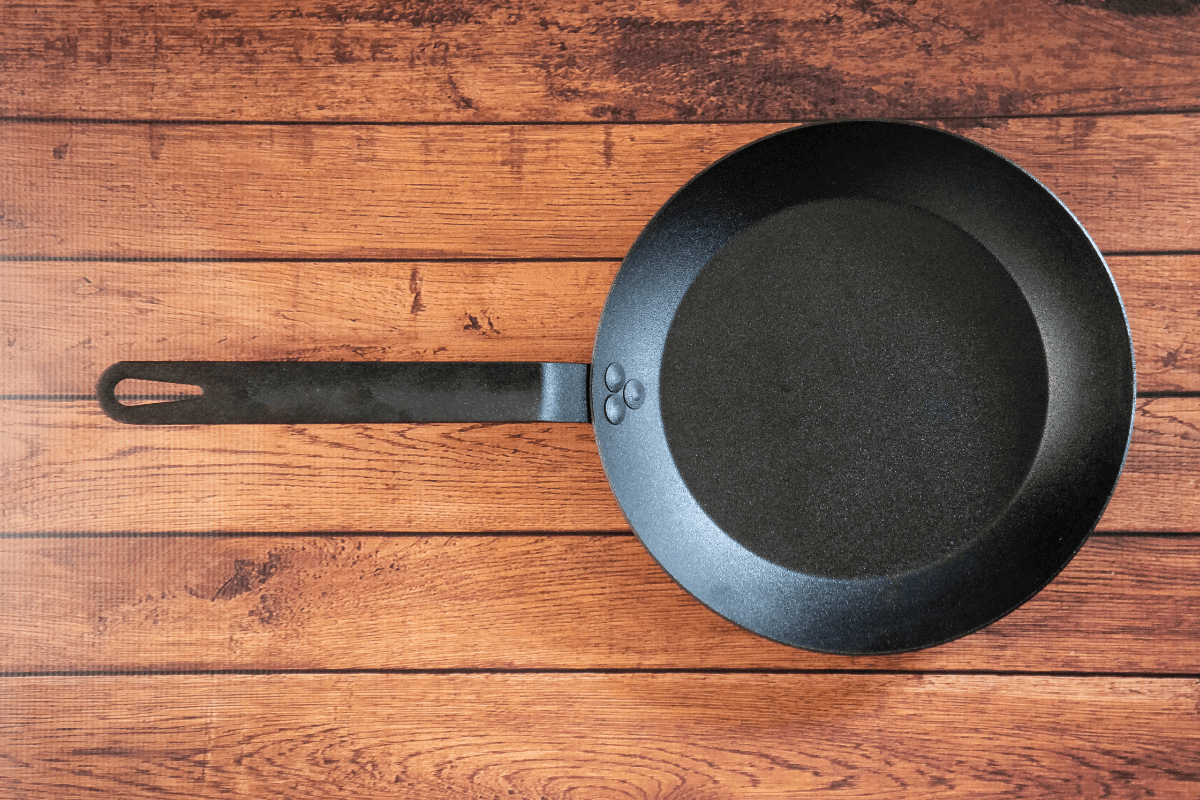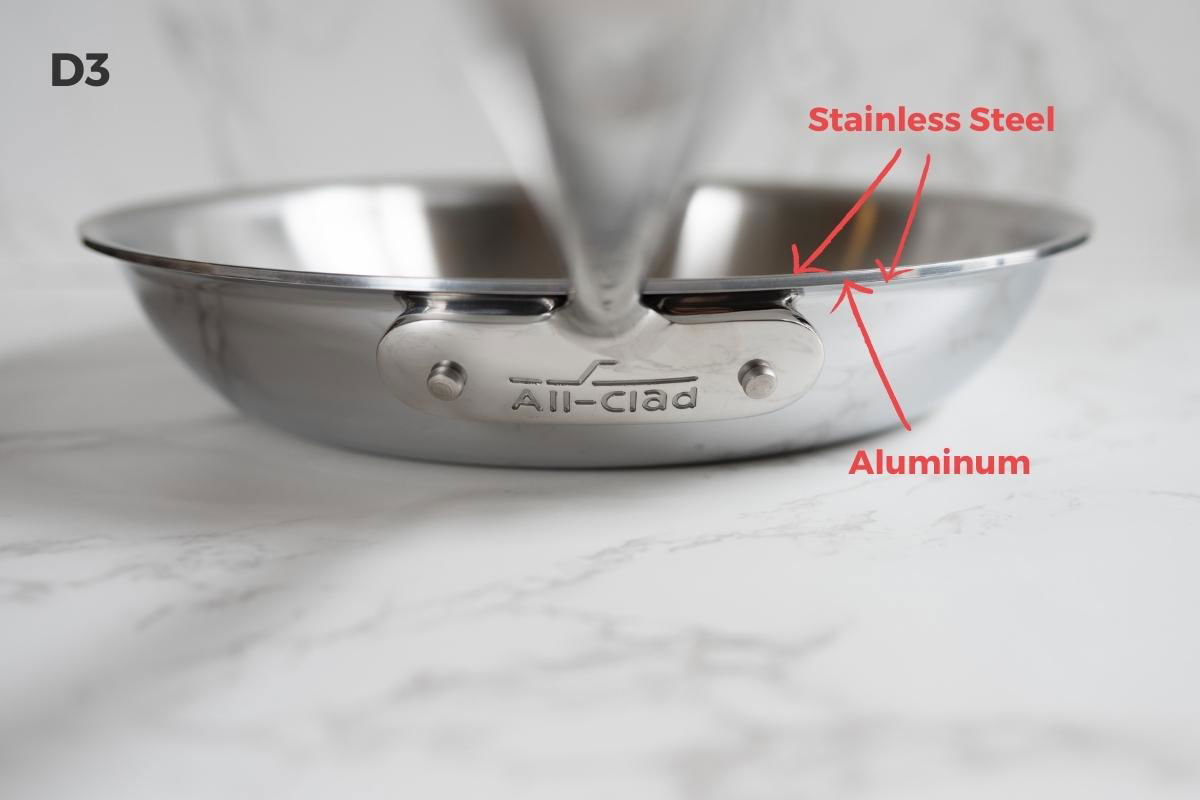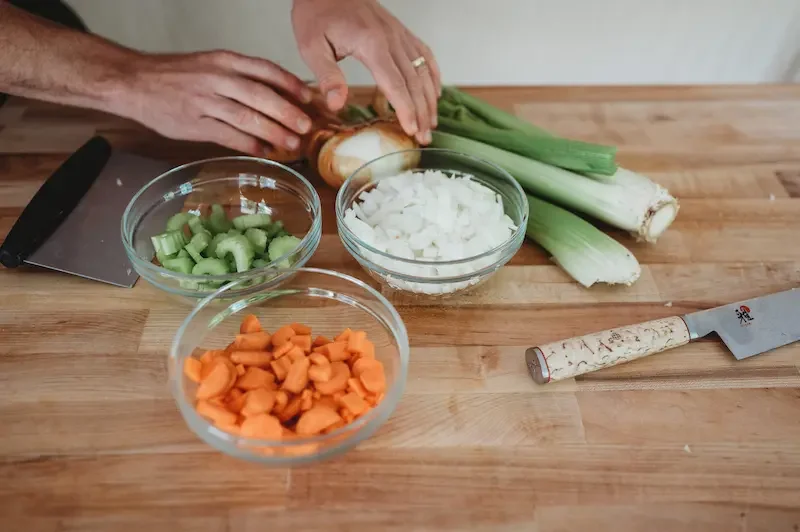Have you ever noticed green or purple kohlrabi bulbs at the grocery store or farmer’s market, and passed them by since you weren’t sure how to prepare them?
I first encountered this colorful and edible globe when I was working as a prep cook at a vegan restaurant. As it turns out, there are a myriad of ways to utilize kohlrabi in both vegetarian and non-vegetarian recipes.
I wrote this article for anyone who is learning how to work with kohlrabi for the first time. But, even if you’ve used it before, you’ll probably find a few helpful tips.
Let’s dig in.
In This Article
Selecting the Perfect Kohlrabi
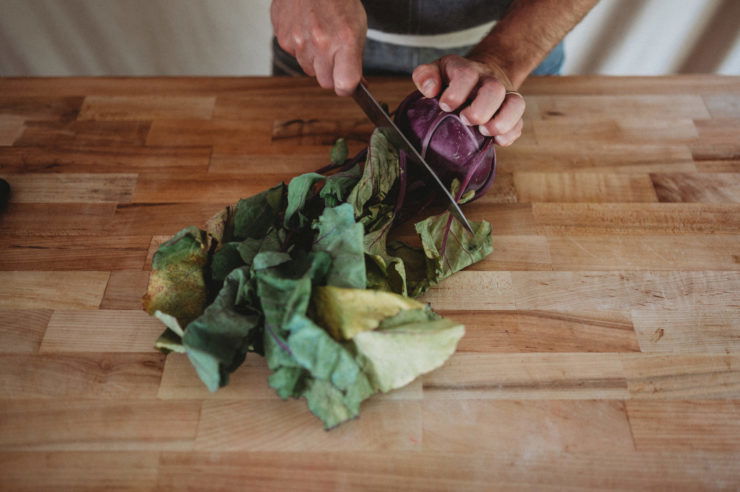
If you’re looking for the highest-quality kohlrabi with the best flavor, start with those that still have healthy-looking, dark green leaves on them.
Make sure the leaves aren’t yellowing or wilting.
Pick bulbs that are very firm and feel a little heavy.
The skin should look fairly even in color (lightish green or purple) and smooth, without any cracks in the surface. The leafy ridges that form concentric circles around the outside of the bulb are normal, and part of a healthy plant.
Kohlrabi of any size can be good to eat. However, the smaller they are, the sweeter and more tender they will be.
Bulbs about the size of a tennis ball and smaller are ideal for eating raw. Their flavor is like a mix between a crisp apple and broccoli stems.
Larger kohlrabis tend to have more of a turnip or radish-like pungency to them, so account for this, depending on what kind of flavor you want in your recipe.
A Method For Quick & Safe Peeling
The great news about kohlrabi is that all parts of it are edible.
Even though the skin is technically edible, it can be fibrous and unpleasant to eat, especially with larger, more mature plants.
Don’t make one of my early mistakes – cutting up the whole kohlrabi with skin still on, and tossing it with other root vegetables to roast. It’s a big gamble if you’re going to like the outcome!
In my experience, it’s best to peel your kohlrabi before using it. You can easily avoid those overly fibrous bits that might conflict with the rest of your dish.
Here’s The Equipment You’ll Need
- A sharp kitchen knife, paring knife, or vegetable peeler
- A cutting board
Step 1: Cut off the bottom and top of the bulb
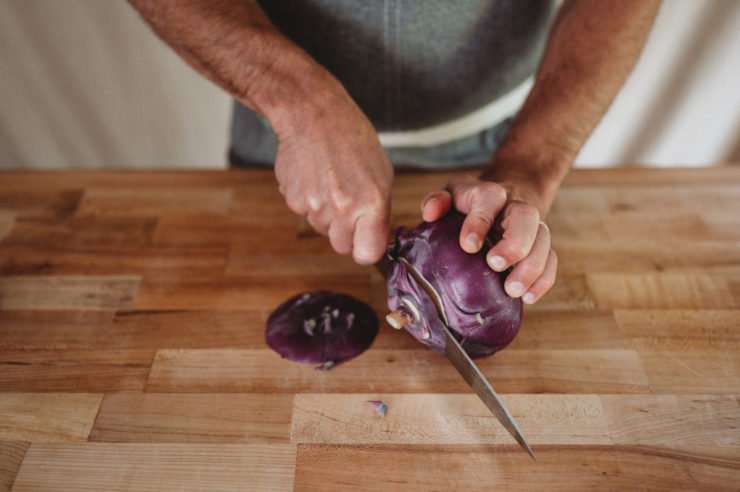
Using a sharp knife, cut off the woody bottom of your kohlrabi.
Then remove the very top and leaves from your bulb, if it still has them. Set the leaves aside to cook separately.

Pro tip: Kohlrabi leaves are edible and can be cooked like kale. Wilt them until just tender in a sautée pan or steamer.
Step 2: Peel or cut off the skin
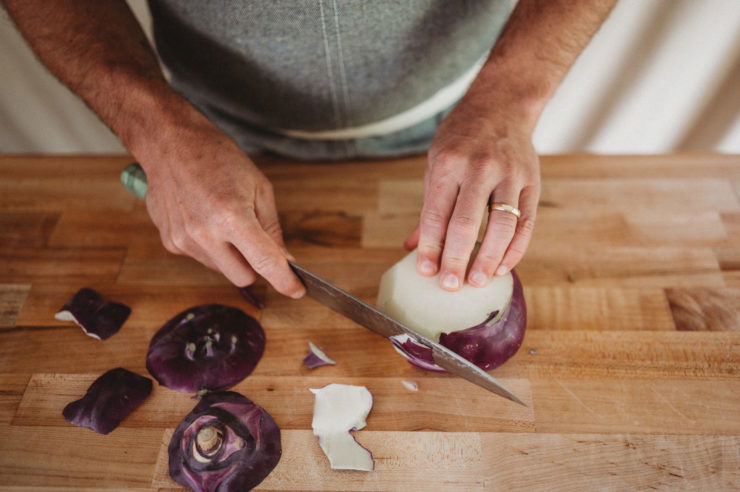
Place one cut side of the bulb down on your cutting board.
Use your knife of choice to cut off the skin. Cut as close to the skin as possible, following the round shape of the bulb. Always be sure to cut or peel away from you for safety.
If you don’t feel comfortable using a knife to remove the skin, try using a vegetable peeler instead. It takes a bit more time due to the rosette of leaf ridges on the bulb, but still gets the job done.
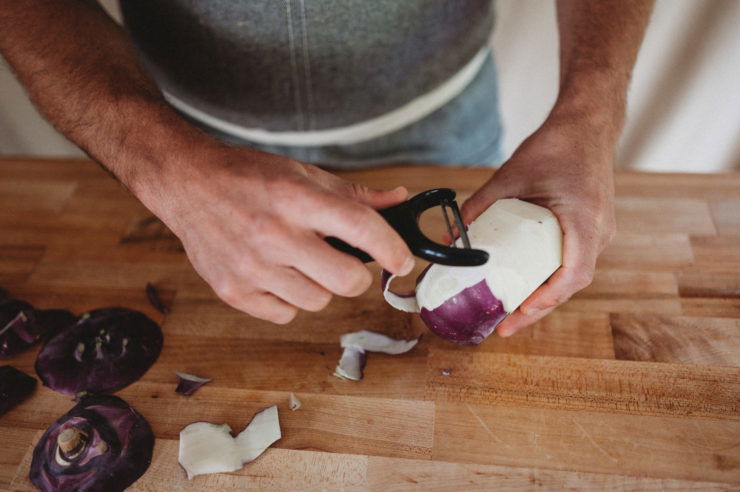
Next, flip the bulb over and remove any remaining skin from the bottom portion of the bulb. Now you’re ready to cut and prepare your kohlrabi.
Seven Tasty Ways to Prepare Kohlrabi
Once you’ve peeled it, there are numerous ways to prepare this unique, vitamin-packed veggie. Though this above-ground vegetable seems like a root veggie, it cooks rather quickly, similar to broccoli stems.
These seven techniques can serve as a springboard for your culinary imagination.
Enjoy it raw
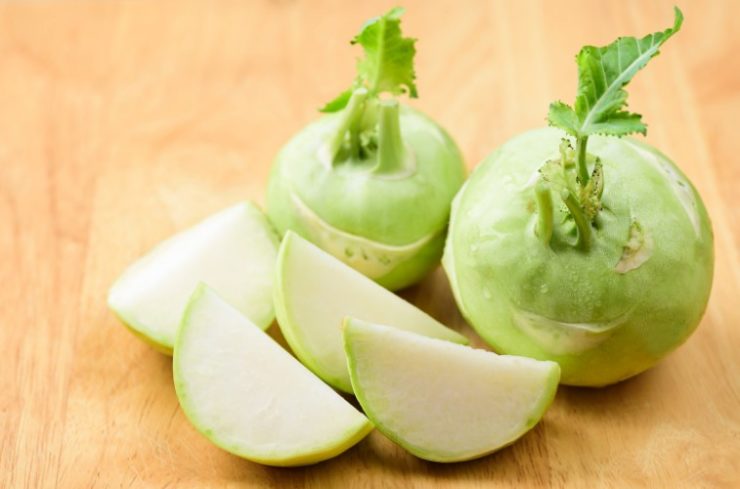
Kohlrabi can be refreshing and flavorful when served raw.
You may prefer the sweeter, milder flavor of smaller kohlrabi bulbs for this method. They can be cut into thin matchsticks, shredded, or cut paper-thin on a mandoline for slaws and salads.
Also, try cutting it into 1/4 inch wide sticks like carrots and enjoy it with your favorite dip for a highly nutritious snack.
Roast it
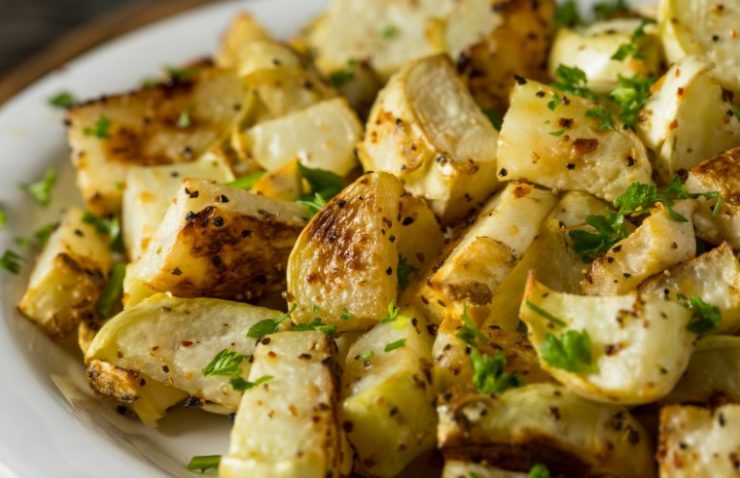
To roast kohlrabi, dice it up or cut it into wedges.
Toss with olive oil and salt and pepper, then place on parchment paper on a sheet tray. Roast in a 450-degree F oven. Cook until soft on the inside and crispy on the outside, stirring every ten minutes or so.
Roasted kohlrabi is amazing with parmesan cheese on top.
Stir-fry it
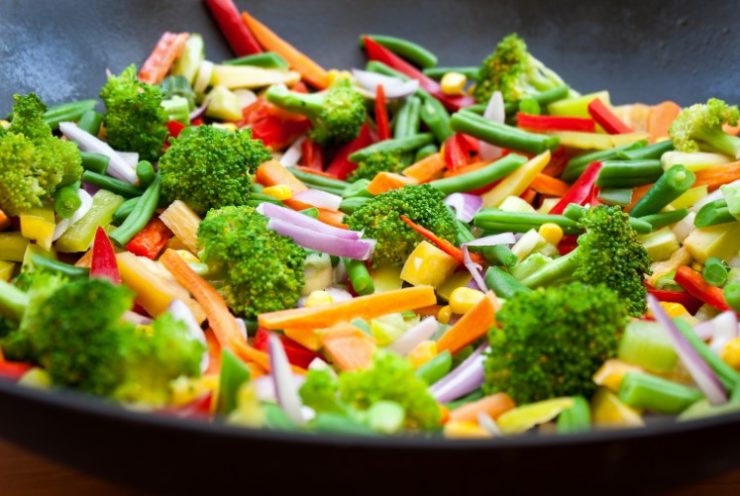
Cut the kohlrabi into matchstick-size or ⅛ inch thick slices (or run it through the shredding blade of a food processor). Add to your favorite stir fry recipe. Avoid adding it to the pan too early, since it cooks fairly quickly as matchstick carrots would. It should take about 3-5 minutes to cook through.
Pureé it for soups
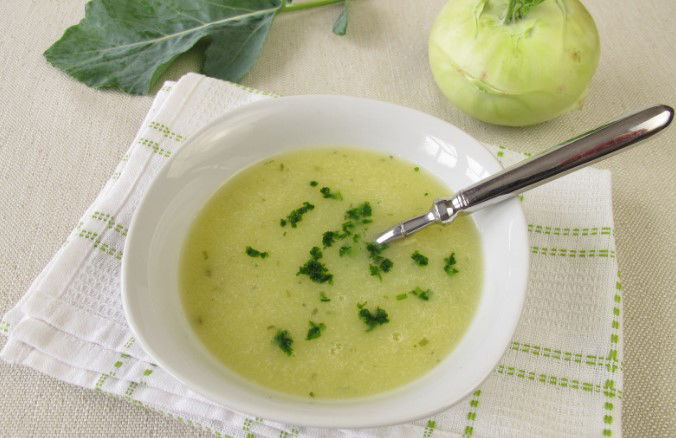
This vegetable also shines in soups. Steam or boil it just until tender, and purée to add to your soup of choice.
Mash it
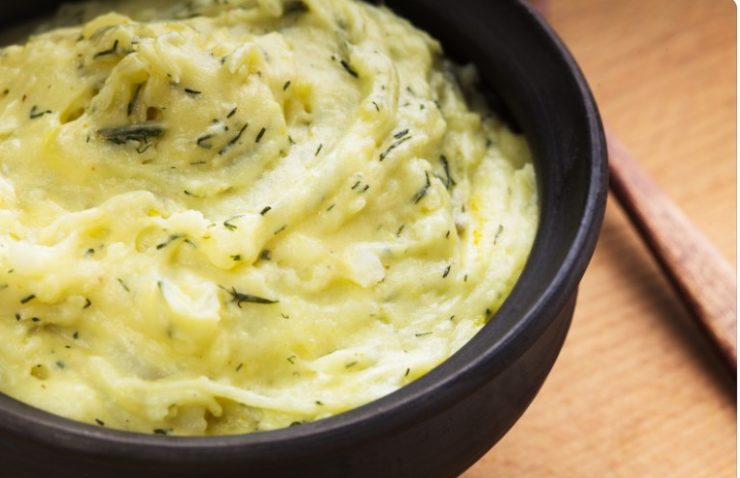
Prepare kohlrabi just like mashed potatoes: cut into quarters or cubes and boil until tender. Try topping with the same ingredients you might put on mashed potatoes or a baked potato: butter, sour cream, bacon, or chives.
Steam or boil it
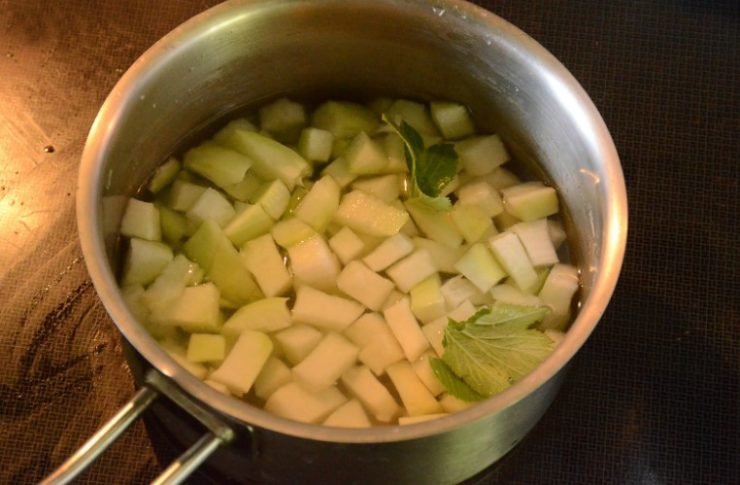
For a simple and quick way to cook kohlrabi, dice it up and steam or boil it just until fork-tender. Consider topping it with butter or olive oil, then season to taste.
Pickle it
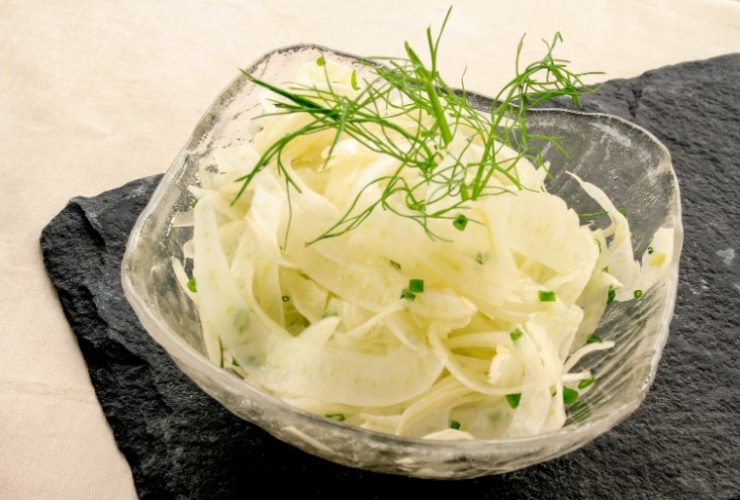
A lesser-known preparation is to pickle kohlrabi. Cut it into matchsticks or quarter it and cut into ⅛ inch thick slices. Use the common quick-pickling method with vinegar, sugar, and spices to make a zingy, crunchy snack that goes great with sandwiches and burgers.
For additional help with different ways to cut up kohlrabi, read about The Basic Knife Cuts here.
Kohlrabi Storage Suggestions
Kohlrabi greens can be wrapped in a damp paper towel and stored in the fridge in a plastic bag for a day or two before eating.
Store whole kohlrabi in the vegetable crisper drawer of your refrigerator. They can be used within 1-2 weeks, depending on freshness. Use them before they start to get soft or wrinkly.
Once your kohlrabi is cut, store it in an airtight container in your fridge. It should be used within 3 days or less, especially if it’s cut thin or shredded.
Pickled kohlrabi can last up to two weeks or longer in a sealed container in the fridge.
Frequently Asked Questions
Can You Eat The Core Of A Kohlrabi?
Yes, all parts of kohlrabi are edible, but the core may be tougher on plants larger than the size of a tennis ball.
What is the easiest way to peel kohlrabi?
It’s easiest to cut off its fibrous skin with a knife, always cutting away from you–but a vegetable peeler also works.
How do you break down kohlrabi?
Cut off the hard bottom of the bulb, then remove the top and leaves. Save leaves separately, then place the cut side of the bulb down to cut off the skin.
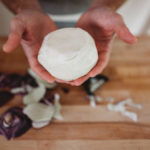
How to Peel, Cut and Cook Kohlrabi
- Total Time: 5 minutes
- Yield: Varies
Description
Fresh kohlrabi has a flavor that’s somewhere between broccoli stems and apples. It’s excellent roasted, mashed, or sliced up thin for salads and slaws.
Ingredients
- 1 Kohlrabi
Instructions
- Using a sharp knife, cut off the bottom of the kohlrabi bulb. Then remove the top and leaves, setting leaves aside.

- Place the bulb cut side down and remove peel carefully with knife, or use a vegetable peeler to remove skin

For Salads:
Cut it into matchsticks, shred, or slice thin on a mandoline to add to slaws and salads.
Roasting:
Dice, toss with olive oil and salt and pepper, and roast in a 450F degree oven until tender on the inside and crispy on the outside.
Stir-Fry:
Cut into matchsticks or ⅛ inch thick slices, and stir fry for 3-5 minutes.
Soups:
Boil or steam until tender, then purée and add to your favorite soup recipe.
Mashed:
Boil or steam until tender, then mash and top with your favorite toppings.
Steamed or Boiled:
Steam in a steamer basket, or boil until fork-tender. Top with butter.
Pickled:
Chop into matchsticks or slices. Use the quick-pickle method and boil in a standard pickling brine of vinegar, sugar, and spices.
- Prep Time: 5 minutes
- Category: Knife Skills
- Cuisine: Any
Keywords: How to Peel a Kohlrabi, How to Cook Kohlrabi, How to Roast Kohlrabi
